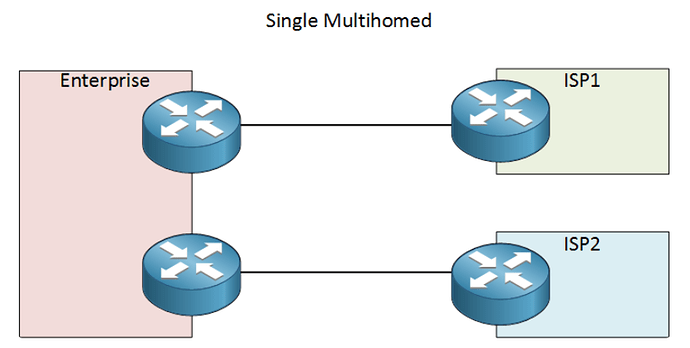Hello Michael
Typical edge router scenarios with dual ISPs and dual internal edge routers should have outgoing traffic balanced between them. So if you’re running HSRP, and internal devices see the two routers as a single virtual router, you can one edge router be primary HSRP router for half of the VLANs while you have the other be primary for the other half. The result is that the traffic (directed to the default gateway) is shared equally.
Once you do that, then as you state in statement 1, it’s a good idea to have each edge router have their default route point to the ISP to which it is connected. This is similar to a Single Multihomed scenario as shown below:
Now all of the above has to do with outgoing traffic, or traffic that was initiated from the inside. For traffic that is initiated from the outside, such as when you want to access a web server on the Enterprise from the Internet at large, then that is where BGP comes in. In that case, you will have to use various BGP attributes to inform both ISPs of your internal IP addresses, and you can adjust these parameters in order to influence incoming traffic to take either the path of one ISP or another. More information on how you can do this both technically and in cooperation with your ISPs can be found at this post:
I hope this has been helpful!
Laz
